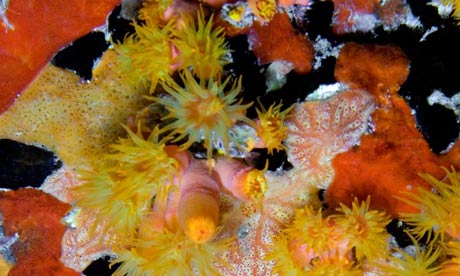A new study has revealed that hurricanes and storms limit the ability of corals to “recruit” new corals into their community.
The study, supported by Earthwatch Institute in the US, was carried out in Belize, a Central American country, by Earthwatch scientist Dr. James Crabbe in 2006 and 2007 with Edwin Martinez, Earthwatch Field Director in Belize, as well as with the help of young local scientists.
Coral Reefs, which can grow to be thousands of years old, form and grow when free-swimming coral larvae in the ocean attach to rocks or other hard surfaces and begin to develop.
But, the new study has determined that intense storms can wipe out this “recruitment” process.
“Increasing evidence now shows that storms are becoming more intense due to climate change,” said Crabbe. “Storms threaten the survival of the entire reef itself,” he added.
According to Crabbe, who is doing a lecture tour related to this work throughout 2008, “If the storms don’t destroy corals outright, they render them more susceptible to disease, and that is certainly apparent on the Belize reefs.”
A team from Earthwatch measured the size of more than 520 non-branching corals in two major coral reef areas in southern Belize: the Sapodilla Cayes Marine Reserve, a world heritage site in the second largest barrier reef in the world, and the Port Honduras Marine Reserve.
In addition to providing habitat for an array of marine life, non-branching massive corals robust and shaped like mounds, and sometimes called ‘brain corals’ buffer coastal zones from erosive wave energy.
Crabbe’s team determined the surface area covered by the corals and entered the growth rates of the corals into a computer model to determine when in history the coral colonies first settled.
They compared numbers of corals that started life in each year with hurricane and storm data, and as suggested by data from fringing reefs of Jamaica, the coral recruitment was much lower during storm years.
According to Crabbe, the study holds implications for marine park managers.
“They may need to assist coral recruitment and settlement by establishing coral nurseries and then placing the baby corals (larvae) in the reef at discrete locations, or by setting up artificial reef blocks to help the corals survive,” he said.

 ANI, May 4th 2008
ANI, May 4th 2008 The “
The “